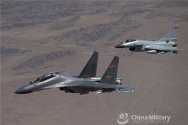I can't speak for Deino. But China had and still has a load of J-7 single engine fighters to replace in its fleet. The single engine J-10 is much cheaper to build than a double engine aircraft. It should have same or better performance than F-16 which equips most of the fleets of the countries around China which are aligned with USA. Just consider Taiwan their best aircraft is the F-16. Japan has more than a few F-2 fighters in its fleet which are basically a 4+ Generation F-16 with a slightly larger wing. South Korea also has large numbers of F-16s.
So China has opted for a high-low mix of single engine J-10 constituting the bulk of its air defense fleet with the double engine aircraft based on the Flanker or the J-20 being used for more demanding scenarios.
... even more since there is not yet a J-31 and the J-20 cannot replace all fighters only since it is the best.



